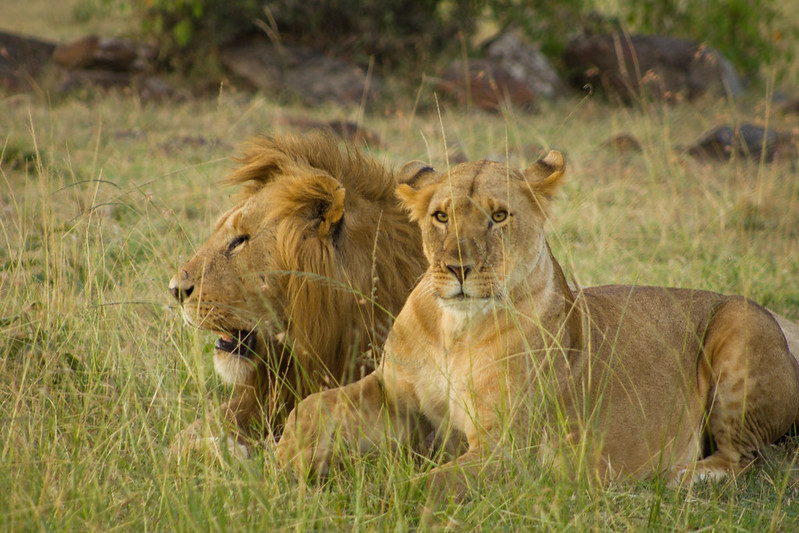For people who yearn to get up close with wild African big cats, while on your Uganda tour you can join researchers on a Lion Tracking project in Queen Elizabeth National Park.
This is not just an activity created for visitors, it is scientific research that is recorded and gives the researchers a better understanding of the habits of the lions found in Queen Elizabeth Park. The cats’ populations are steadily decreasing in the wild.
In just two decades, Africa’s population has decreased 43 percent and it is estimated that as 23,000 remain. One of the main causes is the alarming rate at which they are losing their habitats due to expanding human populations and the resulting growth of agriculture, settlements and roads.
Due to habitat loss, lions are being forced into closer quarters with humans. This is coupled with decrease in their natural prey, causes them to attack livestock. In turn, farmers often times retaliate and kill these majestic big cats.
The Uganda Carnivore Program bases its core activities in the northern sector of Queen Elizabeth National Park and works in close collaboration with the Uganda Wildlife Authority to monitor research and conserve the large predators in the area (lion, leopard and hyena). Senior research assistant James Kalyewa is responsible for the day-to-day monitoring of the park’s predators.
In his spare time, James offers his expertise to the Uganda Wildlife Authority’s Experiential Tourism initiative in Queen Elizabeth National Park. James goes out with tourists into the park, where he shows them how predator tracking is done and also provides them with first-hand knowledge of the challenges involved in research and conservation by introducing them to the area’s wildlife and people.
Lions (Panthera Leo) are one of the species that every tourist wants to see when they come to Uganda. They are the largest and most imposing carnivore in Africa.
They are the only true social cats and have special cultural significance in most countries on the continent. In Uganda, lions enjoy a reputation as King of the jungle and popular symbols of royalty, strength and bravery.
The lion typically inhabits grasslands and Savannah. It can also inhabit forests, but absent in the dense forests. It is usually more diurnal than other big cats, but when persecuted adapts to being active at night and at twilight. A lion pride consists of a few adult males, related females and cubs.
In Uganda, lions are mainly found in three large Savannah park and they include; Murchison Falls National Park, Kidepo Valley National Park and Queen Elizabeth National Park.
In Queen Elizabeth National Park, the Ishasha lions are known for their unique behaviour of climbing trees and have been branded the Ishasha Tree Climbing Lions by tourists.
Lions are after mountain gorillas; they are the most sought-after species by tourists visiting Uganda. The lion is one of the most widely recognized animal symbols in human culture. It has been extensively depicted in sculptures and paintings, on national flags and contemporary films and literature.
The Uganda Carnivore project does research on lions in the northern sector of Queen Elizabeth National Park. Queen Elizabeth National Park is located in the south-western part of Uganda. The park is also a world biosphere reserve, it has a RAMSAR protected wetland, is classified as an Important Birding Area. The park is home to elephants, lions, leopard, hyena, hippos, crocodile’s warthogs and 10 species of primates including the chimpanzee, over 600 bird species are also found in this park. The Uganda Carnivore program is dedicated to the monitoring, research and conservation of predators in Uganda and you can join them on one of their research outings.
You can spend four days with a lion research expert assisting with important tasks such as going on patrol with the lion scouts to identify spoor tracks, tracking and monitoring the movements of radio-collared lions, investigating predatory attacks, and visiting schools and homesteads to educate lion conservation efforts. The number of participants is limited.
Each morning and during the late afternoon you can take part in a Lion Tracking Research Experience in Queen Elizabeth National Park. The tracking at times may last between one to four hours and are done twice a day.
You have to book a head of time in order to take part in this unique lion tracking experience in this park. The cost for Lion Tracking permit costs $150 USD per person including daily day park entrance.

